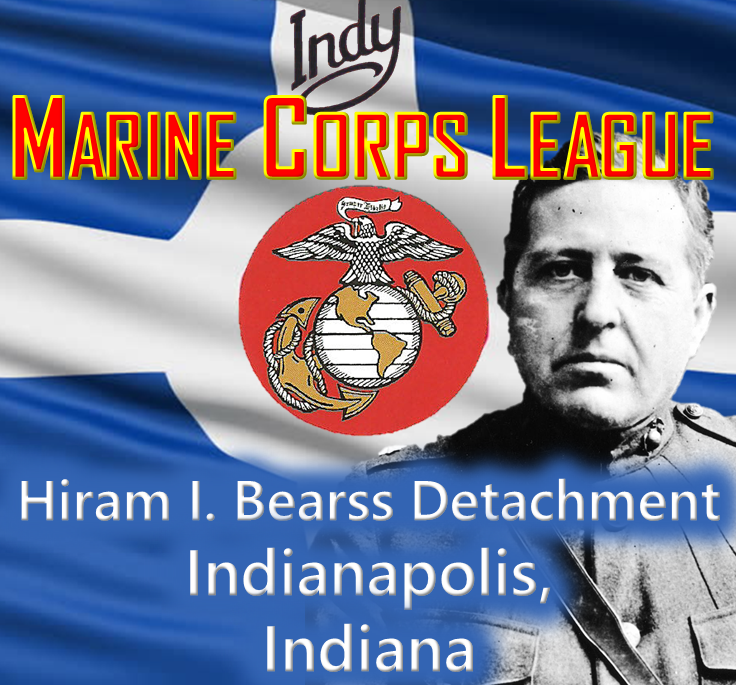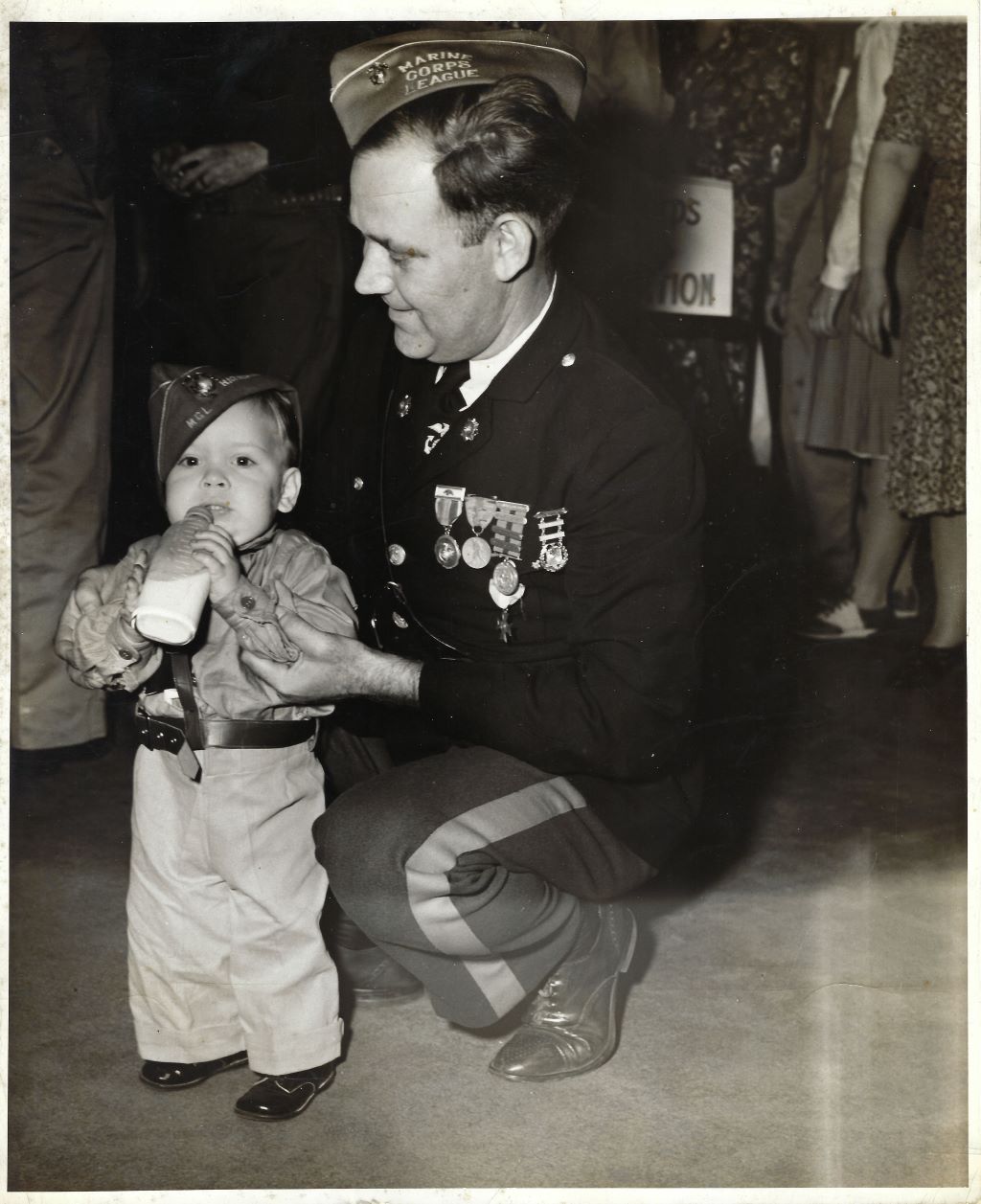
Our Story
Marine Corps League Detachment #089 is named after the first U.S. Marine from Indiana to receive the MEDAL OF HONOR, BGen. Hiram I. Bearss. The Marine Corps League has been serving Indianapolis since the 1920s when Major General John A. LeJeune, Commandant USMC first formed the MARINE CORPS LEAGUE in 1923 and subsequently incorporated in 1937.
INDIANAPOLIS AND MARINE CORPS LEAGUE HISTORY
This first Indianapolis Detachment was known as the LEO LITZE DETACHMENT, named after a WWI Marine Hero, and held meetings above the OHIO THEATER. The LEO LITZE DETACHMENT served Indianapolis Marines for many years as a source of camaraderie and support for the widows and orphans of Marines. This service for and with Marines continued when the detachment was chartered again on 10 JUNE 1953 as the CAPITAL CITY DETACHMENT and served Marines in the Indianapolis area for almost twenty years when it closed in the early seventies. But the Esprit De Corps continued to be strong and the detachment was chartered anew in APRIL 1973 as the HIRAM I. BEARSS DETACHMENT and has been serving central Indiana Marines ever since.
In 1941, the Eighteenth (18th) National Convention of the Marine Corps League, under National Commandant Chris Cunningham, and in 1977, the fifty-fourth (54th) National Convention of the Marine Corps League, under National Commandant Edward A. Schramm, were held in Indianapolis, Indiana.
MARINE CORPS LEAGUE HISTORY
Marine Corps Veterans Conference of 1922 (November 10, 1922)
In 1922, retired Major Sidney W. Brewster had a vision in which appeared thousands of Marines marched in a parade. Until February 1923, his vision was an obsession until others with whom Brewster talked became impressed. From 1919-23, veteran organizations sprang up in all parts of the country. Clubs, associations, and groups for Marine veterans were formed in keeping with the prevalent feeling of esprit de corps and good fellowship. They had served and fought together and now they met to recount the days of 1917-19 spent in Parris Island, Quantico, France, and Germany.
A gathering convened on November 10, 1922, at the Hotel McAlpin in New York City to discuss establishing relationships with other Marine Corps veteran organizations. Among attendees were retired First Lt. Paul Howard, retired First Lt. James Duffy, Second Lt. Frank D'Ipoli, Albert Lages, Milton Solomon, Roy Hagan, Frank Lambert, Miss Ray Sawyer, Mrs. Mae Garner, Webster de S. Smith, Merle McAlister, Rev. J. H. Clifford. After a lengthy discussion, Brewster's vision materialized and he was elected temporary chairman. Sawyer was elected temporary secretary and Raymond Wills was elected temporary treasurer.
A committee was appointed to plan a national organization and the name "Marine Corps Veterans Association" was adopted. The titles of officers were then changed to Commandant, Adjutant, Paymaster, etc.
Brewster was elected as commandant by acclamation, holding that position until the election of Major General John A. Lejeune at the second annual convention. Sawyer worked almost day and night during those early days to obtain a place for the new organization.
The Marine Corps Veterans Association began to organize posts across the country. The first New York Post unanimously elected Colonel George C. Reid as post commandant on December 11, 1922. Detachments began to organize in Philadelphia, Baltimore, Buffalo, Niagara Falls, Cleveland, Chicago, Indianapolis, Houston, and Pittsburgh.
The Marine Corps League was organized at the All-Marine Caucus of 1923 held at the Hotel Pennsylvania in New York City from June 3–6, 1923. It was the offspring of the Marine Corps Veterans Association headed by Brewster, who presided at the caucus.
Marine Corps veterans from many states attended. John A. LeJeune, Commandant of the Marine Corps at the time, was unable to be present but was kept informed of the proceedings by telephone. Brigadier General James G. Harbord, U.S. Army, who commanded the Second Division, American Expeditionary Force (A.E.F.), which included the Fifth Marine Regiment and Sixth Marine Regiment, addressed the closing session and was made an honorary member. At the end of the caucus, the Marine Corps Veterans Association would change its name after a bitter battle on the floor to the "Marine Corps League."
Lejeune was unanimously elected to the position of national commandant and Brewster became the first past national commandant. John A. Lejeune remained Commandant of the Marine Corps League from 1923 through 1929. An amendment to the constitution was also passed at this convention: "All Past National Commandants shall be members of the Staff for life, with a vote, and shall also be life delegates to the National Assembly with a vote."
The Marine Corps League perpetuates the traditions and spirit of ALL Marines and Navy FMF Sailors, who proudly wear or who have worn the eagle, globe, and anchor of the Corps. It takes great pride in crediting its founding in 1923 to World War I hero, then Major General Commandant John A. Lejeune. It takes equal pride in its Federal Charter, approved by An Act of the Seventy-Fifth Congress of the United States of America and signed and approved by President Franklin D. Roosevelt on August 4, 1937. The League is the only Federally Chartered Marine Corps related veterans organization in the country. ("About the Marine Corps League - History", Marine Corps League, https://www.mclnational.org/history.html, 2022)
--- (*) ---
The Marine Corps League is the only congressionally chartered United States Marine Corps related veterans organization in the United States. Its congressional charter was approved by the 75th U.S. Congress and signed by President Franklin D. Roosevelt on August 4, 1937. The organization credits Major General John A. Lejeune, the 13th Marine Corps commandant, as one of its founding members.
("Marine Corps League", Wikipedia, https://en.wikipedia.org/wiki/Marine_Corps_League, 2022)
The League holds a congressional charter under Title 36 of the United States Code.

